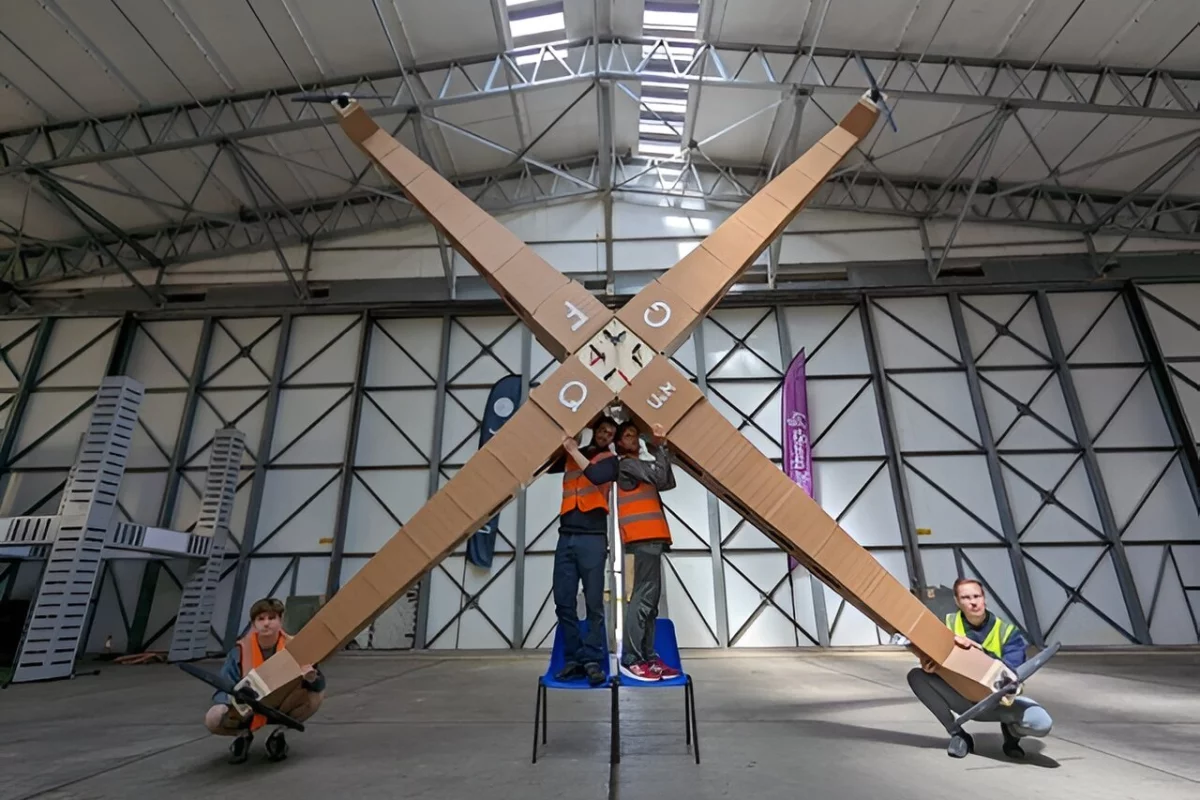University of Manchester engineers set themselves the task of building and flying the biggest quadcopter drone in history, and to keep things legal with aviation authorities, they made some interesting materials choices.
The UK Civil Aviation Authority allows UAVs with a takeoff weight under 25 kg (55 lb) to fly without special dispensations, so the Manchester team came up with a design that weighed 24.5 kg (54 lb) to sneak under the limit.
The giant quad project started as "a curiosity-driven venture to inspire students’ creativity in design by utilizing a suitable alternative low-cost material for lightweight aerospace structures that is more environmentally friendly than the usual carbon fiber."
With strong, lightweight carbon off the table, the students settled on a hollow box-frame design built from 5-mm (0.2-in) thick foamboard, which consists of a foam core with paper skin. Sheets of foamboard were laser-cut and hot-glued together to build the frame.

“Foamboard is an interesting material to work with," said research engineer Dan Koning, design and build team leader. "Used in the right way, we can create complex aerospace structures where every component is designed to be only as strong as it needs to be – there is no room for over-engineering here. Thanks to this design discipline and after extensive background research, we can say with confidence that we have built the largest quadcopter drone in the world.”
Corner to corner, the drone measured an enormous 6.4 meters (21 ft). "There is no record of a purpose-built uncrewed quadcopter (four rotors) of any weight class which is larger than the Manchester vehicle as of the time of writing," reads a University of Manchester press release.
Of course, there are electric VTOL aircraft prototypes much larger – but those use more than four propellers. The team's self-imposed no-carbon restriction means there's presumably a reasonably easy path to a world record available to anyone that feels like putting in the time! Watch this big bird take off in the video below.
Source: University of Manchester





